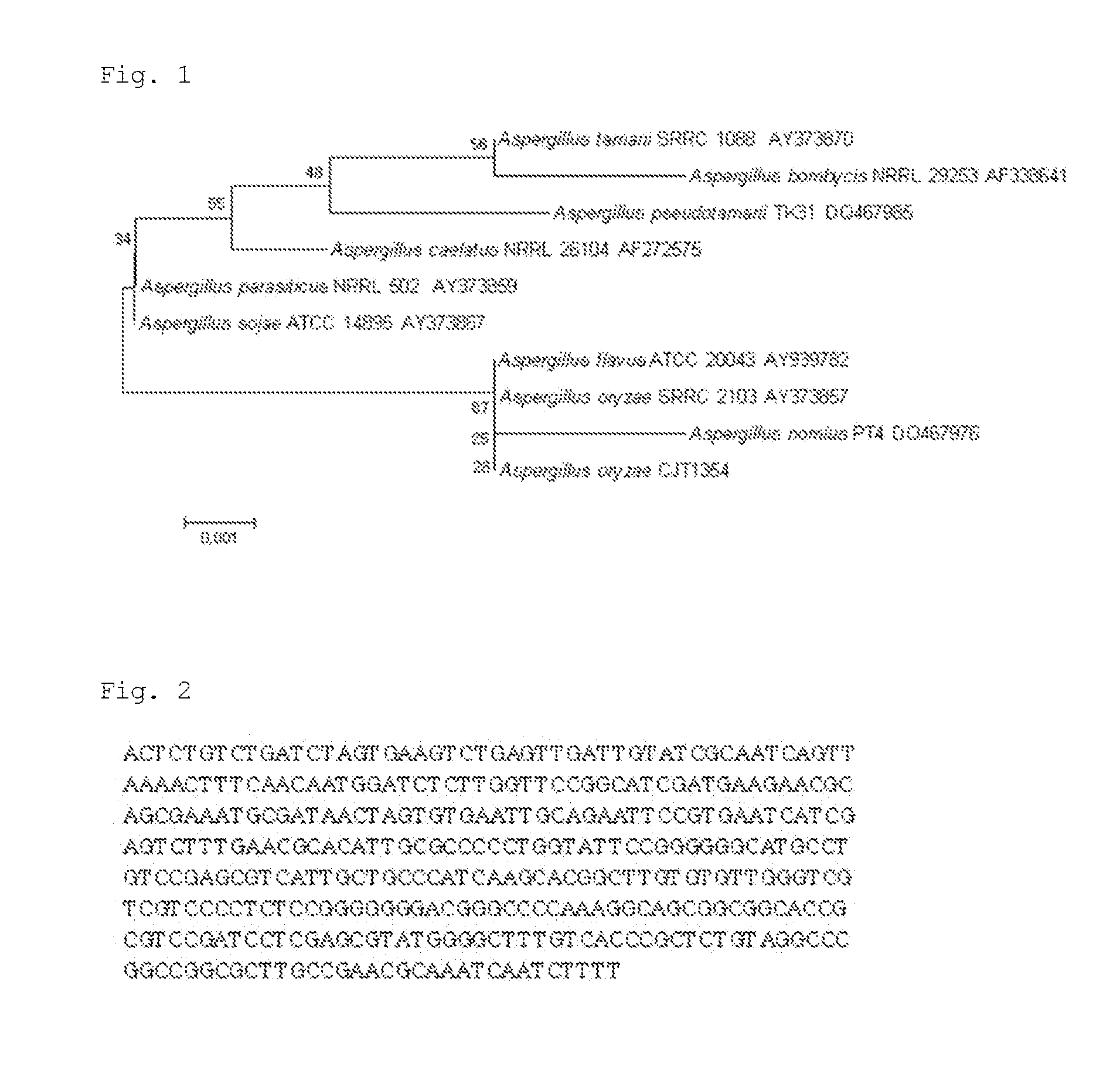Novel Aspergillus oryzae CJ 1354 isolated from the Korean traditional meju, manufacturing method of a rice hot pepper paste using the same and the rice hot pepper paste prepared by the method
- Summary
- Abstract
- Description
- Claims
- Application Information
AI Technical Summary
Benefits of technology
Problems solved by technology
Method used
Image
Examples
example 1
Rice Steaming Including High-Pressure Steaming Process
[0067]Rice having a whiteness of 35 was put in a steamer, and based on the weight of the rice, 75 wt % of purified water was added to the steamer. The rice was steamed for 35 minutes after the addition of purified water, and then the soaking water was discharged at atmospheric pressure. After discharge of the soaking water, the rice was treated with high-pressure steam (2.0 kgf / cm2), and condensed water and the remaining soaking water were discharged for 30 minutes.
[0068]After the rice was treated with high-pressure steam, it was steamed with saturated steam (1.0 kgf / cm2) at 90° C. for 45 minutes, and then cooled to 35° C.
[0069]The physical properties of the steamed rice obtained after the steaming step including high-pressure steam treatment are shown in Table 3 below.
example 2
Preparation of Rice Koji Using Novel Aspergillus oryzae CJ 1354
[0076]The rice steamed in Example 1 was cooled during its transfer to a koji preparing room. The cooled rice was treated with saturated steam (1.0 kgf / cm2) at 1-hour intervals to supplement the outer surface and inside of the rice with water. Then, 0.2 wt % of novel Aspergillus oryzae CJ 1354 was inoculated into the rice and fermented at 38° C. for 3 days to make koji.
[0077]The enzymatic activity of the rice koji prepared using novel Aspergillus oryzae CJ 1354 is shown in Table 4 below.
example 3
Preparation of First Mixture Using Novel Aspergillus oryzae CJ 1354
[0083]Based on the total weight of a first mixture, 15-25 wt % of salt water (30° C.), and 3-15 wt % of powder obtained by simply powdering commercial beans, commercial meju (obtained by fermenting beans alone or a mixture of beans and a starchy material by an improved or conventional method) and doenjang, were added to the rice koji prepared in Example 2, and 5-15 wt % of steamed rice was added thereto and mixed therewith, thereby preparing a first mixture having a water content of 45 wt %.
PUM
 Login to View More
Login to View More Abstract
Description
Claims
Application Information
 Login to View More
Login to View More - R&D
- Intellectual Property
- Life Sciences
- Materials
- Tech Scout
- Unparalleled Data Quality
- Higher Quality Content
- 60% Fewer Hallucinations
Browse by: Latest US Patents, China's latest patents, Technical Efficacy Thesaurus, Application Domain, Technology Topic, Popular Technical Reports.
© 2025 PatSnap. All rights reserved.Legal|Privacy policy|Modern Slavery Act Transparency Statement|Sitemap|About US| Contact US: help@patsnap.com

